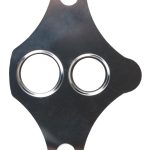Fuel injectors play a vital role in your vehicle's performance. Malfunctioning injectors can lead to poor fuel efficiency and engine issues. Fortunately, testing and replacing them need not be an expensive garage visit. Armed with everyday tools and a bit of patience, you can tackle this task on your own. This guide offers step-by-step instructions tailored for UK vehicles, empowering you to restore your vehicle's efficiency while gaining valuable hands-on experience.
Overview of Fuel Injectors and Their Importance in UK Vehicles
In the realm of UK cars, fuel injectors play a pivotal role in ensuring optimal vehicle performance. Fuel injectors are responsible for delivering fuel into the engine's combustion chambers at precise intervals and in accurate amounts. This precision is crucial for maintaining the engine's efficiency, power output, and emissions standards.
Also read : Unlocking Efficiency: How to Find the Ideal Air-Fuel Mixture for Peak Performance in UK Hybrid Vehicles
Faulty fuel injectors can lead to a variety of issues that can compromise vehicle performance. Common problems include poor fuel economy, rough idling, and increased emissions. Such issues arise when injectors become clogged or leak, disrupting the delicate balance of air and fuel required for efficient combustion.
Regular maintenance and timely replacement of fuel injectors offer significant benefits. By ensuring injectors are functioning correctly, drivers can experience improved fuel efficiency, smoother engine operation, and reduced environmental impact. Moreover, well-maintained injectors contribute to the longevity of the engine, preventing costly repairs and enhancing the overall driving experience.
Additional reading : Essential Tips for Selecting the Best Anti-Theft Devices for Urban Cars in the UK
Understanding the importance of fuel injectors and addressing potential issues proactively can lead to better vehicle performance and reliability. For UK car owners, investing in the upkeep of these components is a practical step towards maintaining their vehicle's health and efficiency.
Tools Required for Testing and Replacing Fuel Injectors
When embarking on DIY fuel injector testing and replacement, having the right tools is essential for success. For those keen on vehicle repair, understanding the necessary equipment can make the process more efficient and safe.
Essential Tools for Fuel Injector Testing
- Multimeter: A crucial tool for measuring electrical resistance and ensuring injectors receive the correct voltage.
- Fuel Pressure Gauge: Helps in checking the fuel system pressure, vital for diagnosing injector issues.
- Noid Light: Used to test the electrical signal sent to the fuel injectors.
Everyday Tools for DIY Enthusiasts
For those new to vehicle repair, consider investing in accessible tools such as:
- Socket Set: Useful for removing and installing injectors.
- Screwdrivers: Required for loosening and tightening various components.
- Pliers: Handy for gripping and manipulating small parts.
Safety Gear
Safety should never be compromised. Essential safety gear includes:
- Gloves: To protect hands from sharp edges and fuel.
- Safety Glasses: To shield eyes from fuel splashes and debris.
- Fire Extinguisher: A precautionary measure in case of fuel-related incidents.
Equipped with these tools, DIY enthusiasts can confidently tackle fuel injector testing and replacement, ensuring their vehicle's performance remains optimal.
Step-by-Step Guide to Testing Fuel Injectors
Embarking on a DIY fuel injector test can seem daunting, but with the right guidance, it becomes manageable. This Step-by-Step Guide will walk you through the process, ensuring your vehicle remains in top condition.
Initial Vehicle Preparation
Before testing fuel injectors, ensure the vehicle is safely prepared. Disconnect the battery to prevent any electrical hazards. It's crucial to work on a cold engine to avoid burns and injuries. Gather all necessary tools, including a Multimeter, to have everything within reach.
Conducting a Visual Inspection
Start by visually inspecting the fuel injectors. Look for visible leaks, cracks, or any signs of damage. A leaking injector can lead to poor performance and increased emissions. Ensure that the fuel rail and surrounding areas are clean, as dirt can interfere with accurate testing.
Using a Multimeter for Electrical Testing
To perform electrical testing, use a Multimeter to measure voltage and resistance. Set the multimeter to the appropriate settings, then connect it to the injector terminals. An injector should show a specific resistance range; any significant deviation may indicate a problem. This method helps pinpoint electrical issues, ensuring injectors receive the correct voltage for optimal performance.
Step-by-Step Guide to Replacing Fuel Injectors
Replacing fuel injectors can be a rewarding DIY task that enhances your vehicle's performance. This guide will assist you in navigating the process with confidence and precision.
Gathering Necessary Parts
Before embarking on a fuel injector replacement, gather all required parts and tools. Ensure you have compatible replacement injectors that match your vehicle's specifications. Consult your vehicle's manual or a trusted supplier to verify compatibility. Additionally, secure a socket set, screwdrivers, and pliers for the task ahead.
Removing Old Fuel Injectors
Begin by disconnecting the battery and relieving fuel system pressure to ensure safety. Carefully detach the fuel rail by unscrewing the bolts, taking care not to damage any surrounding components. Gently remove the old fuel injectors, using pliers if necessary, to avoid damaging the connectors or the injectors themselves. Inspect the area for any debris or residue before proceeding.
Installing New Fuel Injectors
When installing new fuel injectors, ensure they are seated properly in the fuel rail. Align each injector with its corresponding port and apply gentle pressure until it clicks into place. Secure the fuel rail back in position, tightening the bolts evenly to avoid leaks. Reconnect the battery and test the vehicle to ensure optimal performance.
Safety Precautions During the Process
Ensuring safety precautions is paramount during any vehicle maintenance task, especially when dealing with fuel systems. The volatile nature of fuel requires specific measures to protect both the individual and the vehicle.
Importance of Safety in Fuel Systems
Working with fuel systems involves risks such as fire hazards and toxic fumes. Prioritising vehicle maintenance safety can prevent accidents and injuries. Always disconnect the battery before starting to avoid sparks, and relieve fuel pressure to minimise fuel spillage.
Recommended Safety Gear and Measures
Equipping yourself with the right DIY safety gear is crucial. Essential items include:
- Safety Glasses: Protects your eyes from fuel splashes.
- Gloves: Shields your hands from chemicals and sharp edges.
- Fire Extinguisher: A precautionary tool for unexpected fires.
Tips for Working in a Well-Ventilated Area
A well-ventilated workspace is vital to dissipate harmful fumes. Open windows and doors, or use fans to circulate air. This reduces the risk of inhaling toxic vapours and ensures a safer environment. Additionally, keep a clean workspace to prevent tripping hazards and ensure easy access to tools and safety equipment.
Troubleshooting Common Issues with Fuel Injectors
Understanding the symptoms of faulty fuel injectors is crucial for effective troubleshooting. Common signs include poor fuel economy, misfiring engines, and increased exhaust emissions. If your vehicle exhibits these symptoms, it's time to delve into fuel injector troubleshooting.
Identifying Symptoms
Faulty fuel injectors often lead to rough idling and difficulty starting the engine. A noticeable drop in performance and unusual engine noises can also indicate injector issues. These symptoms arise when injectors fail to deliver the correct fuel amount, affecting combustion efficiency.
Common Troubleshooting Methods
For those keen on DIY solutions, start by performing a visual inspection for leaks or blockages. Use a multimeter to check the electrical resistance of each injector. A fuel pressure gauge can help determine if the fuel system is maintaining adequate pressure. Cleaning the injectors with a suitable fuel system cleaner might resolve minor clogs.
When to Seek Professional Help
If troubleshooting efforts don't resolve the issues, it's advisable to consult a professional mechanic. Persistent problems could indicate deeper issues, such as damaged injector components or electrical faults, requiring expert intervention. Seeking professional help ensures accurate diagnosis and effective repair, safeguarding your vehicle's performance.
Resources for Tools and Replacement Parts
Embarking on a DIY fuel injector project requires reliable resources for tools and parts. In the UK, several trusted tools and parts suppliers cater to DIY enthusiasts and professional mechanics alike.
Recommended Suppliers for Tools and Parts
For quality tools and parts, consider suppliers like Halfords and Euro Car Parts. They offer a wide range of vehicle components, including fuel injectors, and provide expert advice to ensure compatibility with your vehicle. These suppliers are known for their extensive inventory and customer service, making them ideal for sourcing UK vehicle parts.
Online Resources for Purchasing Fuel Injectors
Online platforms such as eBay and Amazon offer a convenient way to purchase fuel injectors. These sites provide competitive prices and customer reviews, helping you make informed decisions. Ensure you verify the seller's reputation and the product's compatibility with your vehicle before purchasing.
Community Forums and Support for DIY Enthusiasts
Joining community forums like PistonHeads or UKCampsite can be invaluable. These platforms connect you with fellow DIY enthusiasts, offering support, advice, and shared experiences. Engaging with such communities can enhance your knowledge and confidence in tackling fuel injector projects.
Frequently Asked Questions about Fuel Injectors
Fuel injectors are critical components in vehicles, yet there are many common questions about their maintenance and functionality. Here, we address some prevalent inquiries to provide clarity and DIY guidance.
How often should fuel injectors be tested or replaced?
Fuel injectors should typically be tested every 30,000 miles to ensure optimal performance. Replacement intervals vary based on vehicle use and injector type, but generally, injectors last between 50,000 to 100,000 miles. Regular testing helps identify issues early, avoiding costly repairs.
What are some misconceptions about fuel injector maintenance?
A common misconception is that fuel injectors do not require regular maintenance. In reality, periodic checks are essential to prevent clogs and leaks. Another myth is that all injectors need replacement simultaneously. Often, only the faulty injectors need replacement, saving time and money.
How can I maintain my fuel injectors between replacements?
To maintain injectors, use high-quality fuel and consider adding fuel system cleaners periodically. These measures help prevent buildup and ensure smooth operation. Additionally, keeping the fuel tank above a quarter full reduces the risk of debris entering the fuel system, prolonging injector life.











